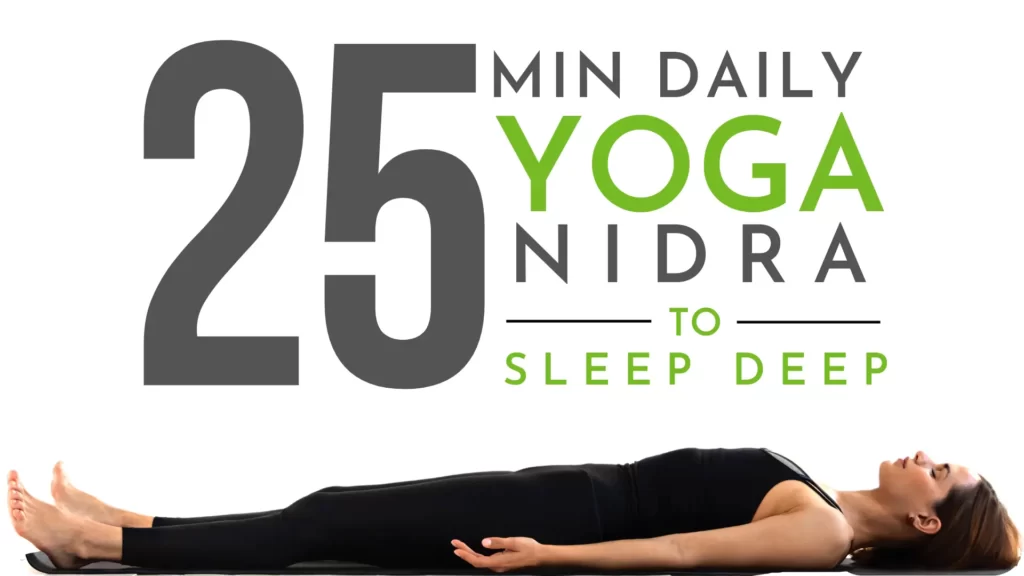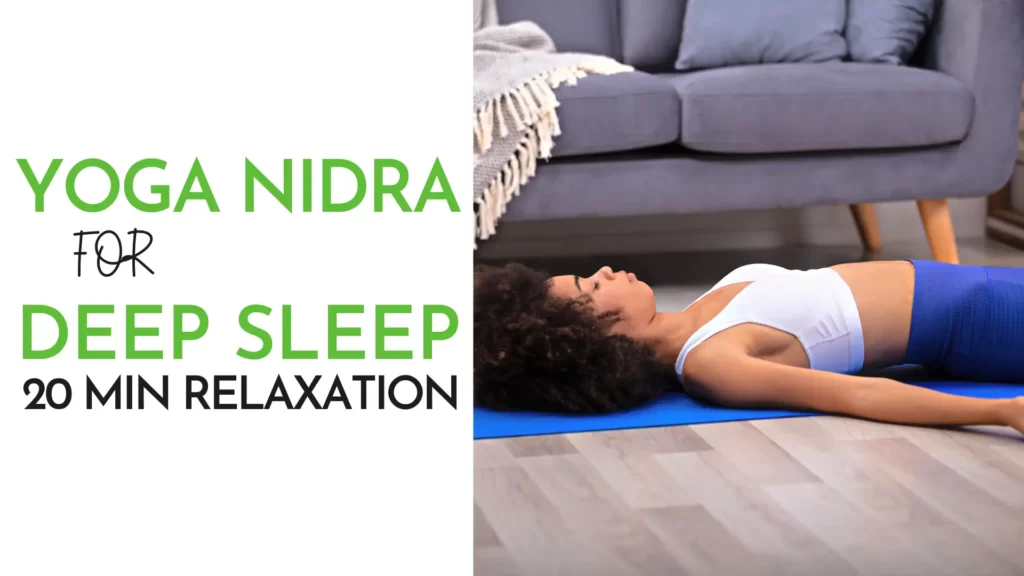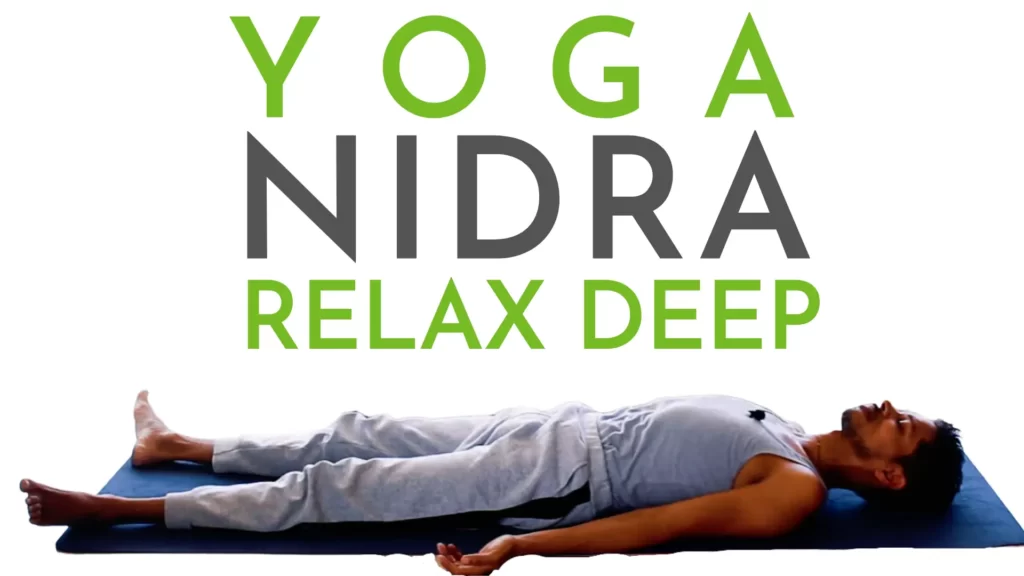Health Benefits Of Yoga Nidra
Today we will discuss the Health Benefits Of Yoga Nidra, Yoga Nidra has been shown to help you get rid of ulcers, pain, fatigue, and stress, leaving you feeling more relaxed and rejuvenated.
Probably one of the most important benefits of yogic Nidra is the simplicity of yogic Nidra, which helps to calm and relax the nervous system.
Deep breathing and systemic muscle relaxation help calm the parasympathetic nervous system, which is exactly what yoga Nidra does, promoting stress relief and rejuvenation.
By entering this parasympathetic state, yoga Nidra can help to slow the heart rate, soften skeletal muscle tone, relax breathing, and calm the mind.
In meditation, you let go of all your efforts, but when you practice Yoga Nidra, you consciously relax them by moving the various parts of your body with gentle attention and awareness.
However, when one does a yoga Nidra class, one maintains a state of awareness by consciously relaxing parts of the body and mind, thus deepening the benefits of yoga Nidra.
While meditation and relaxation like yoga Nidra can help you sleep better, you really shouldn’t fall asleep while practicing meditation or Yoga Nidra.
These steps will help you dive into a light yoga Nidra sleep practice that will give your mind and body an extra dose of relaxation. If you’re looking for yoga for sleep, try these 8 mins of yoga poses.
The goal is to enter a state of conscious sleep and completely relax the brain, thereby releasing any unwanted tension in the body. This brings us into a state of deep sleep when our senses, intellect, and mind relax.
This means that it is different from sleep and involves conscious awareness and can promote creativity. This is an ancient technique in which the practitioner enters a state of deep conscious relaxation.
Even when the brain enters a state of deep relaxation, you observe the body, mind, and five senses. “During meditation, you sit and are in a waking state of consciousness where you focus your mind and allow thoughts to come and go.
Mindfulness meditation is both a practice and a state of being: the experience of being open and aware in the present moment.
The practice of yoga includes various techniques such as physical postures, controlled breathing, deep relaxation (yoga nidra), and meditation, which seem to have a special effect on a person’s mental state.
Usually, yoga nidra is practiced lying down in shavasana, some even practice yoga nidra in a sitting position to relax the body just before starting the meditation practice.
Yoga Nidra, also known as sleep meditation or effortless relaxation, includes yoga poses that increase the energy levels in your body.
Modern yoga Nidra is usually practiced at the end of a physical yoga asana class, or it can be practiced at home, remember to practice on the set day and time each week to feel the full benefits and set the pattern regularly.
Hatha yoga has been found to reduce stress and anxiety levels in students, other age groups, and occupations as well.
Previous research has also shown that using yoga techniques such as hatha yoga for other conditions (cancer survivors, self-reported emotional stress) results in beneficial effects on depression and mood, as well as anxiety and physical well-being.
Meditative practices such as yoga Nidra counteract the effects of stress and hyperactivity by increasing the growth of parts of the brain that regulate cognitive and executive functions, emotions, and self-control.
Although hatha yoga has been shown to have a significant effect on the relaxation response, no studies have observed an effect of this practice on stressful activities such as teaching compared to sitting meditation.
A study of 150 women with cycle disorder (severely painful, unpredictable cycles) found that women who took medication and practiced yoga Nidra for 35-40 minutes five days a week experienced symptoms such as painful cramps, anxiety, and symptoms such as depression less than women who received medication only.
In a remote study conducted in the spring of 2020, Dr. Sharp performed yoga Nidra remotely online before bedtime and measured the effects on anxiety and sleep after one practice session. A study found that yoga Nidra is an effective therapeutic technique for reducing anxiety and stress levels.
In addition, Valerie Ugrinov says that practicing yoga Nidra regularly can expand your ability to deal with conflict in stressful situations.
The practice not only causes instant relaxation but also has a lasting effect on your mental state. This practice, if done regularly, is good for health as it helps the mind to relax.
An ancient practice to tame the nervous system, the result of the exercise will find your mind in a more collected and peaceful state. As your mind begins to calm down, you achieve greater mental clarity, which helps you gradually enter the state and clear your mind of thoughts.
The process usually begins by focusing your attention on various parts of the body and consciously taking slow, deep breaths to elicit a relaxation response throughout the body.
You begin by perceiving the body and breathing in a certain way to activate the relaxation response. Step 2 consists of breathing and feeling the body, which causes relaxation responses in the physical body (tissues).
It is also helpful to exercise in the evening before bed to prepare the body for sleep. Nighttime practice will help you sleep well most of the night.
Since the way you sleep helps you prepare for the next day’s work and adventure, yogic sleep can help you release muscle tension that has built up in your body and mind.
The practice of yogic sleep allows the body time to rest, repair, and regenerate, thereby reducing inflammation and improving immune system function. It can also help manage immune function, blood pressure, and cortisol levels, and induce restful sleep.


